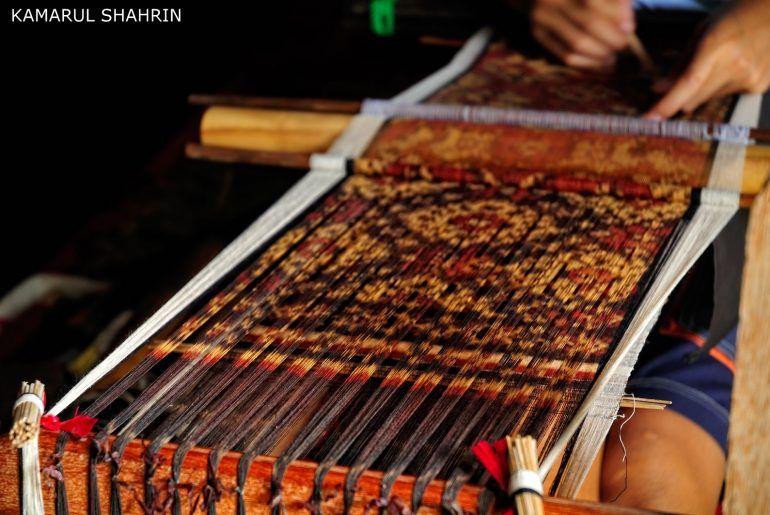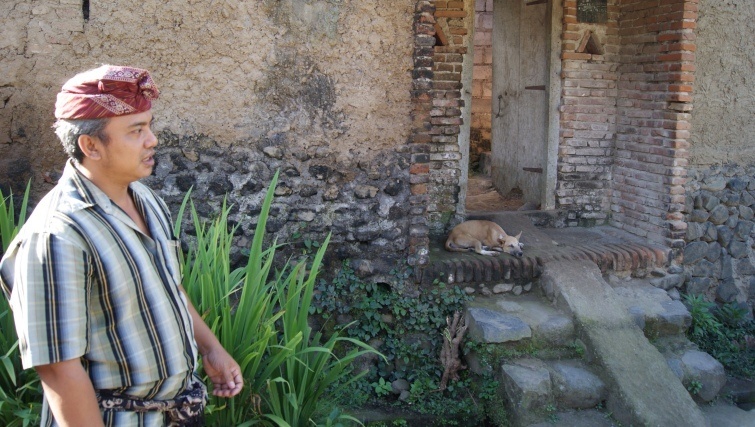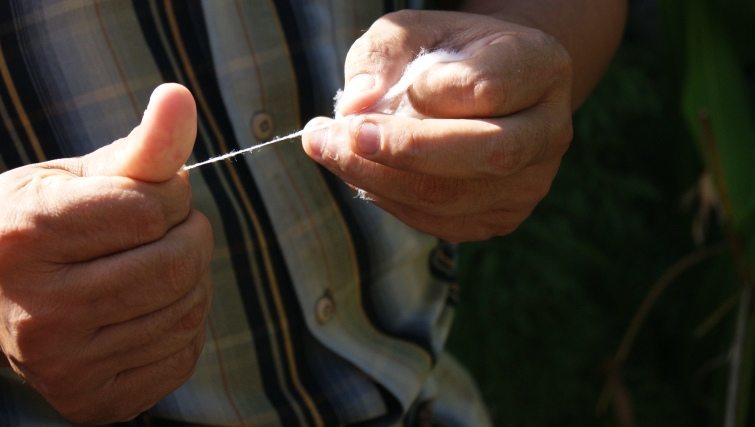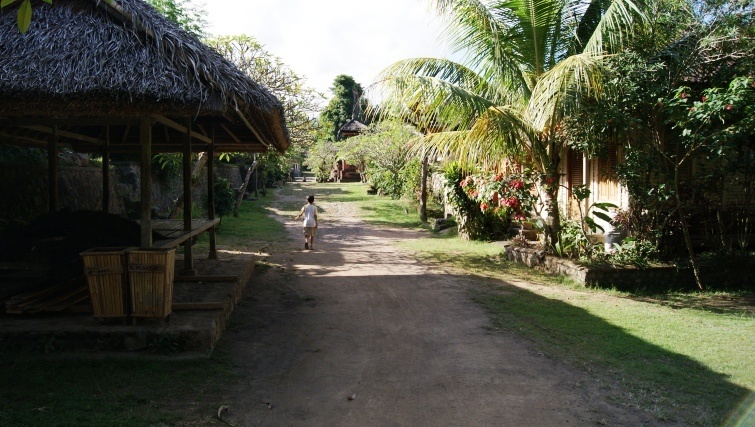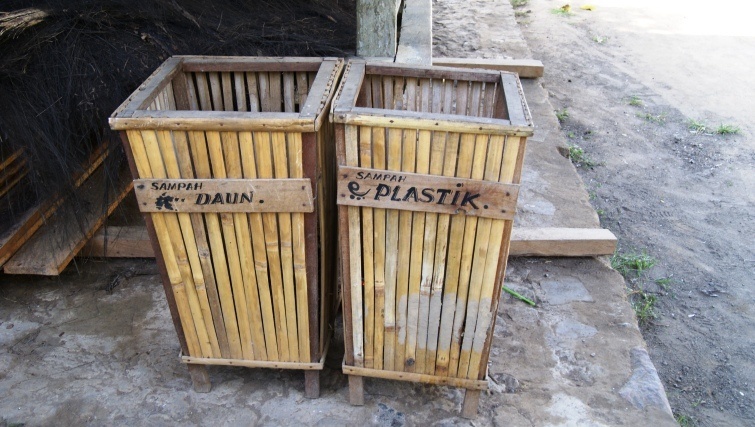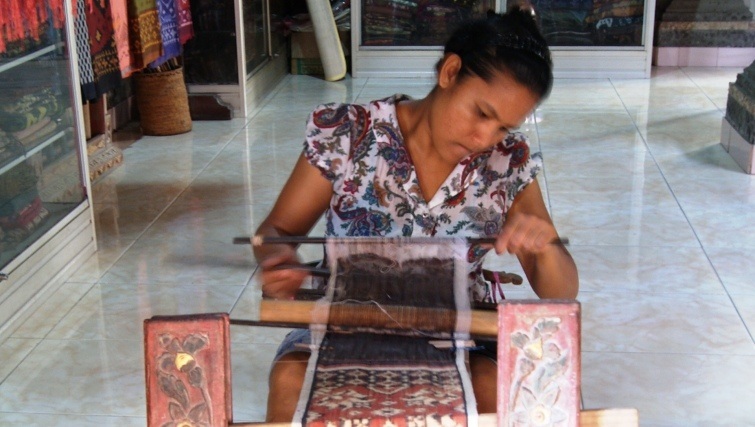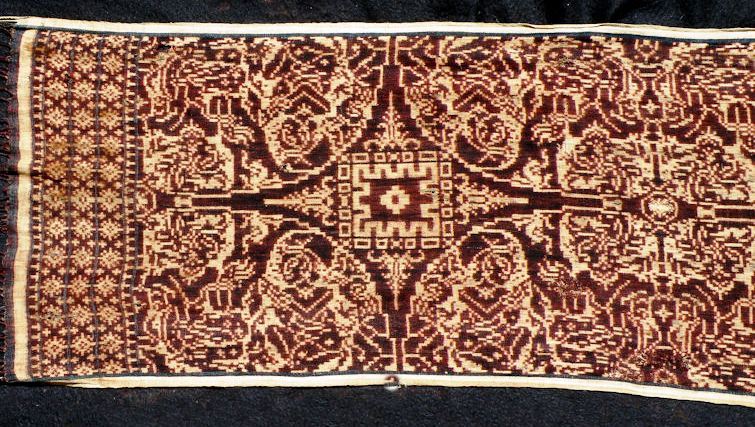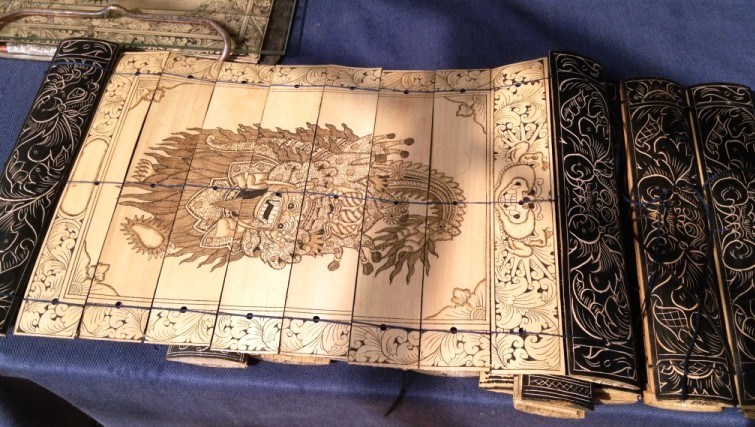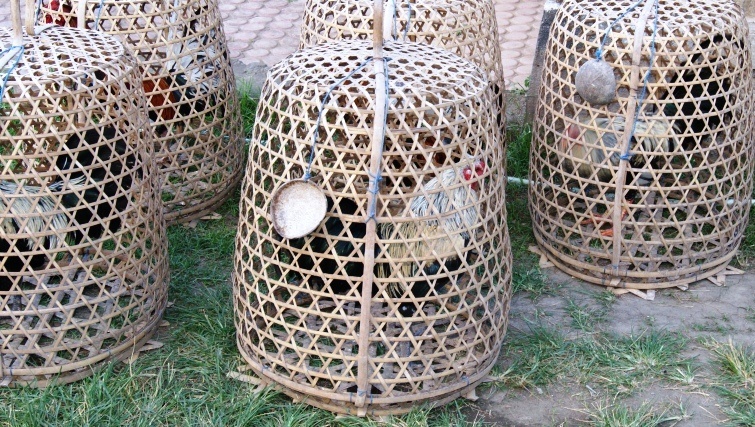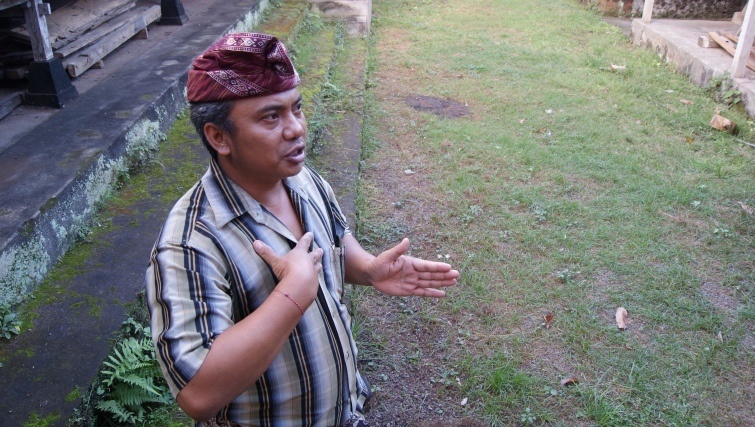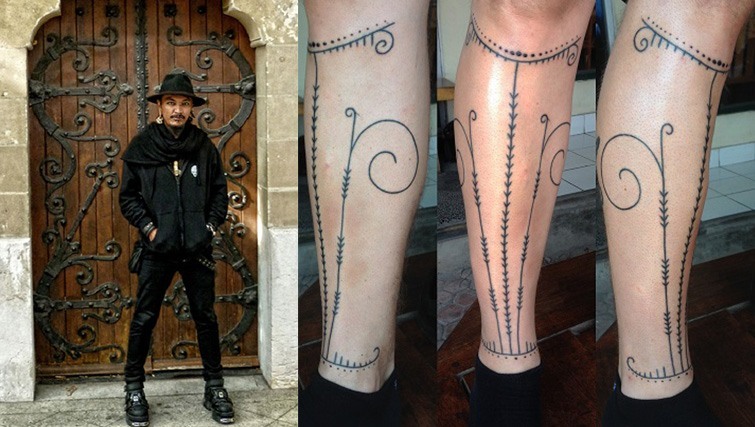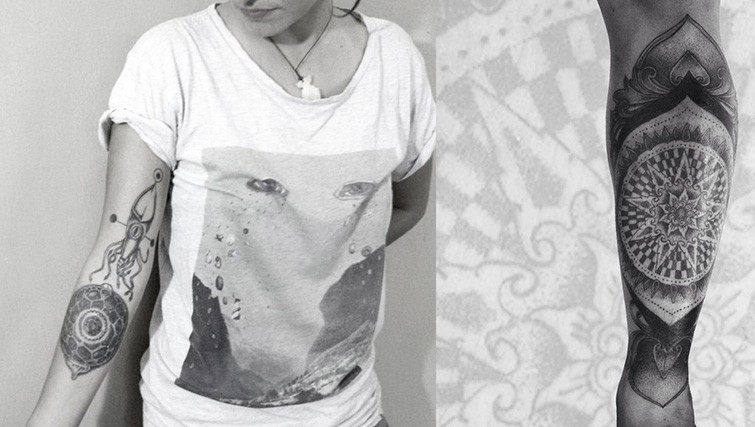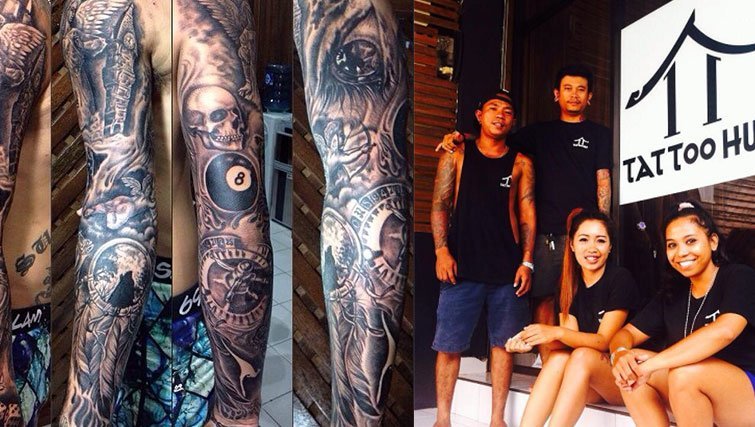So you moved to a tropical island paradise away from the city life. You happily slipped your feet into a pair of Havaianas, tucked your makeup bag in the farthest corner of your wardrobe, and planned to enjoy wearing a torn t-shirt, eating street food and drinking Bintangs for the rest of eternity. But to your surprise, you started to miss all that glam and champagne much faster than you expected.
Luckily, Bali is the island of contrasts, and the posh part of island life is as well developed as the budget one. So put on those high heels and red lipstick, dress up your date in a nice collared shirt and go dine in style!
Welcome to part two of our guide to the best restaurants in Seminyak.
Teatro Gastroteque – a gastronomic experience for a special occasion
It is quite challenging to write about Teatro Gastroteque – it’s a case of the Chinese proverb “when hearing about it 100 times is not as good as seeing (or tasting) it once”.
A purely Indonesian venture, Teatro is headed by Chef Mandif M. Warokka who has an impressive collection of work experience under his belt, as well as several gold and silver awards from prestigious competitions through Indonesia and the Middle East.
This is a very small restaurant, sitting only 25 guests – making it all the more possible to enjoy the gastronomic theatre, where the open kitchen is the stage, the chef and cooks are the actors and the main star of the show is, of course, the cuisine.
The decor is modest but tasteful: dark wood, granite and velvet, red and dark grey tones and dim lighting with flickering candles. Teatro Gastroteque’s warm atmosphere allows diners to easily focus on the exquisite dining experience.
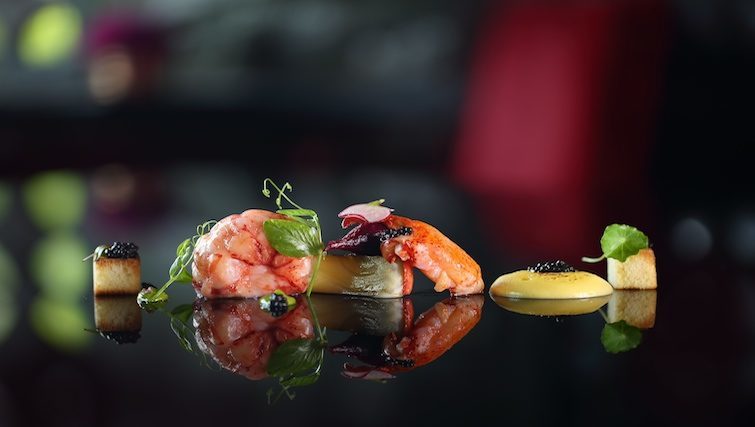
Chef Mandif is very passionate about fine dining cuisine; in all of his dishes he is addressing your taste buds rather than your stomach, choosing a flavour adventure over the feeling of fullness.
The menu is an Asian-European fusion that some consider worthy of Michelin stars. Teatro’s signature experience is the degustation menu involving a minimum of 3 courses, which actually gets served up as 6 to 7 dishes including the aperitif. The other options are a substantial 5 or 7 course Discovery Menu and Chef’s Degustation Menu, which include up to 15 dishes.
The food is prepared with about 90% local produce and served beautifully in fancy plates made here on the island.
The menu changes regularly depending on the availability of ingredients – Teatro always serves what is in season and at its best. Being a fine dining restaurant of such quality and passion, Teatro Gastroteque is heavily focused on wine pairing, so the wine selection is very broad here, showcasing both old and new world. They also have a variety of Martinis for the aperitif.
Tetro Gastroteque is a restaurant to dine at on very special occasions and heaven for adventurous foodies.
Get ready for an exquisite experience – your dinner might last up to 3 hours, leading to the feeling of gourmet satisfaction without the ghastly food coma.
Address: Jalan Kayu Aya, Blok C No. 1-2, Seminyak, Bali,80361, Indonesia.
Phone: +62361 8700078
Operating hours: Tue-Sun 6pm – 11pm.
Bambu – authentically Indonesian
Bambu is a new kid on Petitenget’s fine dining block, located right next to Hu’u Bar and opposite Salty Seagull. The way Bambu tells it, there is no main mastermind behind this lovely restaurant, it is a group accomplishment and they don’t believe in singling out any one individual – even the owners prefer to remain out of the spotlight.
Bambu was created in homage to all things we love about Indonesia.
The idea was to create something respectful to the place that Bambu’s creators have chosen to call home for the last 20 years; an idea that has been executed without fault. The architecture, the textiles, the graciousness of the people, the superbly handcrafted materials, and of course, the varied cuisines all hailing from various islands within the archipelago.
The receptionists, all dressed in crisp white outfits, will greet you at the entrance and show you to your table. You will take a few steps across the koi pond, immediately finding yourself in a tranquil environment, very different from the busy world outside on the street. The design of the venue is reminiscent of a traditional joglo pavilion, with modern touches such as eggshell coloured floors and carved wooden screens.
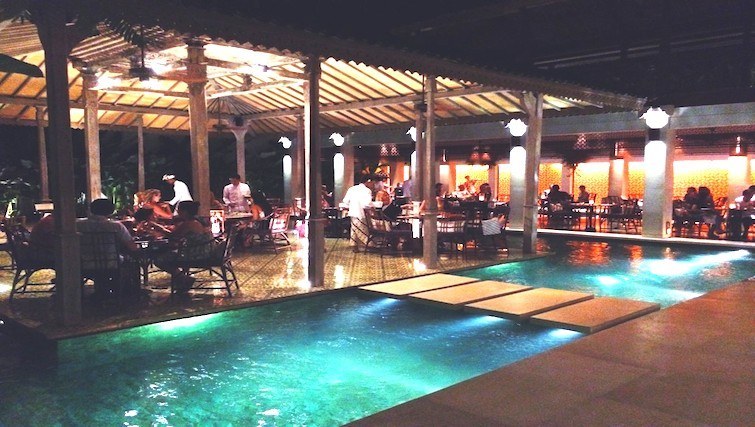
Bambu’s menu was created based on extensive travel and research throughout various parts of Indonesia. Whilst the presentation of the food is more on the exquisite side, the recipes and history of each dish remains true to their roots. The owners like to think of the food here as ‘inspired village cuisine’ or ‘upscale warung’. If the cuisine is supposed to be spicy, it is SPICY – no ‘bule’ discounts here. If you can’t take sambal like a local, be sure to inform your waiter.
The team of staff are immensely knowledgeable on the origins of each dish on the menu, guiding diners through the selections if they need some help. We especially love their dessert menu boasting dishes like green pandan crepes wrapped around coconut and palm sugar and black rice pudding balls.
Bambu’s chefs are currently putting together some sharing menus that will be suitable for larger groups. At the moment, the table sizes are limited to a maximum of 8 people to ensure the best quality service and food for everyone.
Just like the food, the drinks here are also inspired by herbs, spices and tradition. Many of the classic elements found in the bumbu (spice pastes) are used to enhance the flavour of the cocktails and non-alcoholic beverages made in-house.
With rotating menu items to keep things fresh, this is one restaurant to keep coming back to again and again.
Address: Jl. Petitenget no. 198, Seminyak, Bali 80361, Indonesia
Phone number: +62 361 8469797
Operating hours: 6pm – Midnight.
Urchin Grill & Raw Bar – one for the seafood lovers.
Located in a boutique colonial hotel, this place is minimalistic, unpretentious and brilliant in its simplicity. Urchin Grill & Raw Bar is about seafood, gin and good times.
The centrepiece of the dining room is an open plan kitchen, where you can witness the freshest ingredients turning into a savoury dish that will please your senses. Culinary maestro chef Steven Skelly has an impressive twenty years of professional experience and is renowned for his great talents in the kitchen.

Surprisingly enough, Urchin’s customers have been raving about the bread. A small but important detail that so many restaurants fail to pay attention to, this meticulous point of difference sets the standard for the rest of the menu and the level of service.
The “raw” section of the menu does not consist of any superfood magic grass, as the word might suggest in Ubud. Rather, you can expect the likes of Tartar and Carpaccio or Sashimi and Urchin Maki – a gleefully fancy affair.
There are also various dishes to choose from involving grilled and roasted fish. For the incorrigible carnivores there is suckling pig, oxtail soup and of course, steak. All the classics for the meat aficionados.
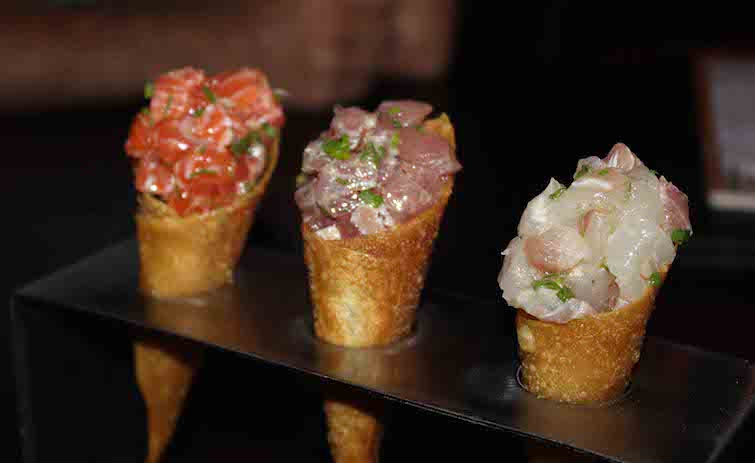
Try a small morsel of everything by ordering a tasting menu, which you can also pair with beverages or wine. The specialty of Urchin’s bar is gin; there are nine different blends presented on the menu and almost as many gin-based cocktails. And to top it all off they make their own tonic water! This idea goes straight into the “attention to details” folder, filed neatly alongside the incredible bread.
Digestives are dotted near the desserts menu, right after tea and coffee. After all, strawberry and guava soufflé might taste better accompanied with a cognac rather than a cappuccino.
When it comes to the vibe, the owners themselves refer to it as fun dining rather than fine dining. No candlelit rooms, fancy views or chandeliers. Just top quality seafood cooked in various imaginative ways.
Address: Jl. Laksmana no. 22, Seminyak, Bali 80361 Indonesia
Phone number: +62 361 736 319/+62 361 732 413/+62 361 904 2000
Operating hours: 3pm – Midnight.
Sardine – from Bali with love
Fresh seafood, organic produce, open spaces, a beautiful view and good service. If we had to give you a brief description of what Sardine is all about, that would pretty much sum it up. Or perhaps in a more poetic way, “Cuisine Du Soleil”.
Sardine is hidden behind a stonewall adorned with rice farmer hats, right before Lio Square on one of the most traffic dense spots in Seminyak.
Entering through the gates and stepping through an unassuming partition feels like walking through a wormhole; the peaceful countryside style view is quite contradictory to the hustle and bustle that is left behind. What you find is a little oasis with a tasteful layout and carefully detailed décor. The entire restaurant, right down to the colour scheme, is designed for rest and relaxation.
The feature material, bamboo, has been used to create a unique and contemporary yet warm and inviting architecture with “Bali soul”. The corners of the premises are surrounded by thriving bamboo overlooking stunning rice fields and a large barong head honours the wall next to the entrance.
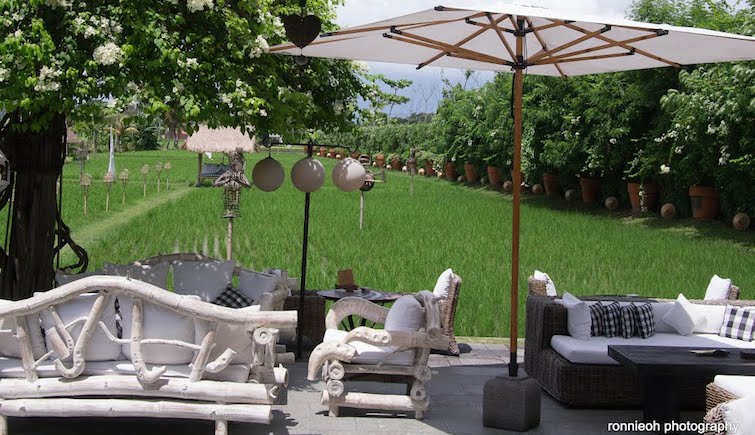
Sardine works mainly with local produce such as organic vegetables from Batu Riti gardens or fresh fish and seafood from the markets, avoiding imported produce as much as possible.
Although the menu is predominantly seafood, some meat and poultry dishes are also present. The dinner menu changes daily due to the availability of produce or what is in season and the lunch menu changes weekly.
The must tries of the house? Start with the Banyuwangi scallops on the half shell with Asian salsa, or the smoked sardines with Bedugul potato salad, crème fraiche, lemon and chives. For the main affair, devour the barramundi steamed in banana leaf with ginger, the grilled whole fish “Jimbaran style” with sambal matah or the pan seared diver scallops with mushroom ravioli and parsley-truffle emulsion. Whichever dessert you choose, consume it at the table next to the rice paddy – this will add an extra sweet taste to your experience.
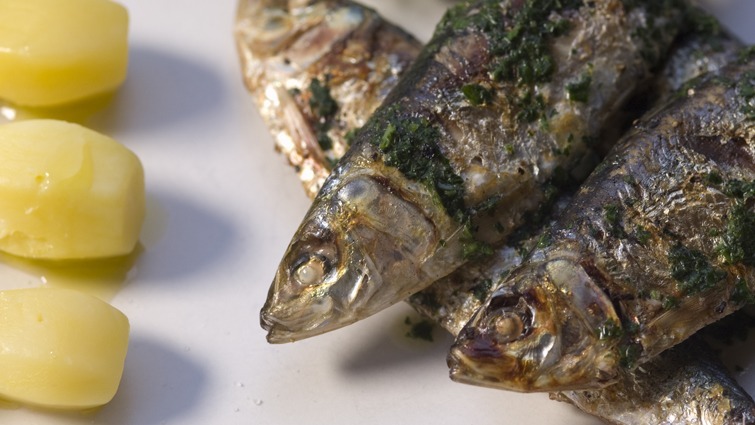
A cozy bar offers a small selection of tasty dishes as well as a choice of exotic drinks like coconut martinis, raspberry mojitos, passion fruit daiquiris and bloody marys with a celery stalk and a king prawn.
Sardine is the perfect environment for cozy drinks or a romantic dinner as behind it all, there is a love story, which extends into a passionate and gastronomic affair with the Island of the Gods. Everything here really is made with love.
Address: Jl. Petitenget no. 21, Kerobokan, Bali 80361 Indonesia
Phone number: +628113978111 / +628113978333.
Operating hours: 11.30 am – 1 am.
So, there you go. You know where to turn your footsteps for Bali’s food best. When you feel like having that classy dressed up outing, sipping wine and enjoying gourmet dining. Fill up your Bali “to-do” list with our hints and recommendations and get your stomach ready for some serious gluttony and overeating.
You have been informed. You have been warned.
Still craving more culinary creations? Check out part one of our guide to the best fine dining restaurants in Seminyak.

